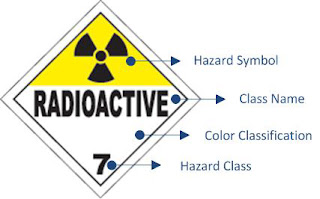The pursuit for the understanding of the world around us is
one of man’s greatest obsessions. Entire fields of study have been formed to
explain everything from the inner workings of tiny particles to the awesome
power of phenomena such as storms and lightning. There are those among us that
build their careers on finding the reason ‘why’ things behave the way they do.
These are the fearless, the bold, and maybe just a little bit
crazy research scientists.
One such group of scientists from the
Florida Institute of Technology, led
by Joseph Dwyer, is studying a newly observed type of lightning called ‘dark
lightning’ or terrestrial gamma-ray flashes (TGFs). Currently there are
conflicting opinions about the specific properties of dark lightning. What is
not disputed is that this type of wave exists and it is one of the most
powerful energy forms composed of light that scientists have observed here on
Earth.
First a brief
explanation of visible lightning
Lightning is nature’s way of equalizing the polarization
between two clouds, within a single cloud, or between a cloud and the surface
of the Earth. As the electric field within a cloud increases, the air around
the cloud begins to ionize. That is, electrons are pulled away from the
surrounding air molecules. These fragments of molecules form a conductive
plasma pathway between two objects. The positive ions travel upward through
this path and the negative ions (electrons) travel downward. When they meet, a
complete pathway is formed. Lightning is the result of the charge transfer
between cloud and cloud or cloud and ground through that pathway.
 |
| Basic Principles of Visible Lightning |
So exactly what is
dark lightning and how is it related to regular lightning?
Periodically energy outbursts are observed in high energy
thunderstorms. The theory is that certain conditions cause the electric field
built up by the storm to discharge in a different way. Storms can discharge energy
by converting it into a flash of intense ionizing (x-rays and gamma rays) radiation
that travels upward rather than channeling that energy downward in the form of
heat and light. These waves are radiated upward in all directions instead of formed
into a directed bolt. As such, this cloud of energy dissipates quickly.
 |
| (From left to right) Start of energy transferal,
energy discharged up as 'dark lightning', energy discharged down as visible
lightning (Credit: Studio Gohde) | | |
Gamma rays? Those are
only man-made or found around black holes and supernovas right?
Scientists previously assumed that this was the case. After some extensive research, Professor Dwyer
and his team have a theory that the thunderstorm acts as a giant particle
accelerator. Electrons are accelerated almost to the speed of light by the
strong electrical fields in the storm. More
study is needed to define the method of generation and properties of this phenomenon.
The advantage to further research in this field is that there are many devices
already designed that detect and analyze gamma radiation.
Is dark lightning
dangerous to humans?
Any kind of ionizing radiation is harmful to humans on some
level. However, the likelihood of being close enough to absorb enough rays to
be harmed is pretty slim. Dark lightning occurs in the neighborhood of 16,000
feet. Commercial airplanes cruise at an altitude of about 30,000 to 40,000 feet
so at most the plane would pass through the height in question twice during
their flight. Also pilots try to avoid flying through the heart of a
thunderstorm. Even if the timing was
just right, the amount of radiation emitted by a flash of dark lightning is
maybe up to the equivalent of 10 chest X-rays around the edges and up to 1
full-body CT scan in the very center of the radiation burst according to
research scientist, Joseph Dwyer. Dwyer also indicated that dark lightning
seems to be fairly rare; he and his team have figured that dark lightning
occurs maybe once for every thousand visible lightning flashes.
So next time a storm rolls in, think about all of the
amazing properties that come along with that storm. This discovery shows just how much exploring
we have to do even in our own backyards. Imagine what future generations of
research scientists will find.
____________________________________________________________________
D-tect Systems is a supplier of advanced radiation and
chemical detection equipment sold around the world.
www.dtectsystems.com.
References:
Thunderstorms Generate Mysterious 'Dark Lightning', Rick Pantaleo, voanews.com
Dark Lightning Linked to its Luminous Twin, Becky
Oskin, Live Science
Scientists detect dark lightning linked to visible lightning, Nikolai Østgaard, AGU
Florida Institute of Technology
Wikipedia (Overview of Lightning)









